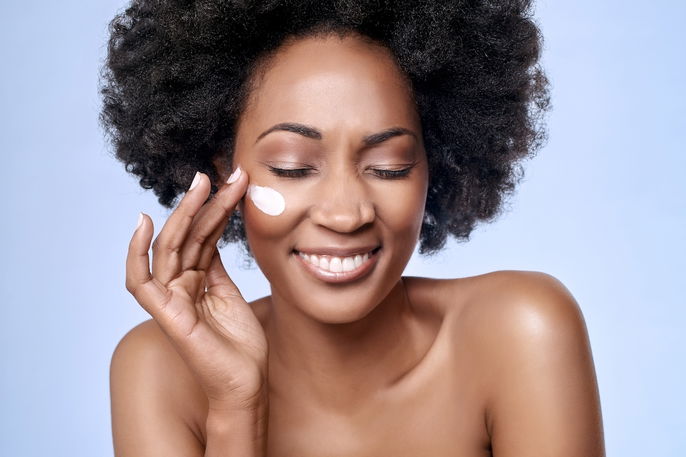Melasma treatment commonly involves the use of lightening creams (like hydroquinone or tretinoin) and/or cosmetic treatments (like laser, chemical peeling or microneedling). These should be prescribed and guided by a dermatologist.
Melasma is more commonly noted in areas that exposed to the sun, such as the face. Therefore, it is very important to use sunscreen so that the optimal lightening of the skin is achieved, and worsening is prevent. Melasma can be related to many different causes, like hormonal changes during pregnancy, the use of contraceptives, the use of certain medications or aging, and therefore treatment can vary.
Melasma is treatable, although the best treatment depends on the type, location on the body affected and the depth of the spots, which can be superficial, or epidermal, deep, or mixed. It is important to consult a dermatologist for assessment, which will help to guide the best treatment.

Treatment options
The main melasma treatments that may be indicated by the dermatologist include:
1. Sunscreen
The use of sunscreen is essential for the treatment of melasma, as no other treatment will be effective without protecting the skin against the sun's rays. You should look for a sunscreen with at least SPF 30, every day even on cloudy days or when remaining indoors.
It is also important to avoid exposure to the sun when treating pimples or acne. If you are in very sunny environments, be sure to reapply sunscreen every 2 hours.
2. Lightening creams
Creams that lighten dark spots on the skin, like melasma, are typically effective. They can provide long-term treatment and guarantee a lasting result. They can usually be used anywhere on the body:
- Hydroquinone, contains a lightening active ingredient, and should be used 1 to 2 times a day. However, duration should be limited, as prolonged used can be irritating to the skin and cause peeling and itching.
- Retinoids, such as tretinoin, adapalene and tazarotene (in cream or gel form) are useful for reducing darkening of the skin.
- Topical corticosteroids (in ointment form), can be used for a short period of time to reduce skin inflammation that can cause blemishes;
- Azelaic acid also has an effect on controlling the amount of melanin and darkening of the skin;
Other acids, such as kojic, glycolic and salicylic acid, are commonly used in cosmetic treatments, and are more effective when combined with other acids, to help lighten and renew the skin.
Treatment time varies according to the product used, the characteristics of the melasma and the person's skin type. In general, results can start to be seen after 2 to 4 weeks of treatment, and can last for up to 6 months.
3. Cosmetic treatments
Cosmetic treatments may be recommended by the dermatologist to treat melasma, as they promote the removal of the superficial layer of the skin and provide faster results. Some of the cosmetic treatments that may be recommended by your doctor are:
- Chemical peeling, is done by using acids with stronger concentrations than those used in creams. These remove the top layer of the skin. Peel strengths range from mild (for superficial melasma) or strong (for deep melasma).
- Microdermabrasion, known as crystal peeling, is a professional exfoliation technique that removes the superficial layers of the skin for a renewed appearance;
- Microneedling is a technique that pierces the skin with microneedles to stimulate the production of collagen and blood circulation in the skin. This can be useful for reducing some spots on the skin, in addition to reducing wrinkles and sagging skin.
- Intense pulsed light is usually not an initial option, but it can be used in some cases that do not improve with other treatments. However, is applied incorrectly, IPL can can even worsen skin darkening.
Generally, several sessions are needed to obtain the desired result, which varies according to the intensity and depth of the melasma.
4. Laser Treatment
Laser procedures are a great option for treating blemishes, as it releases a wave of heat onto the skin. This destroys the melanin pigment, and is usually indicated for cases of deep melasma or melasma that has not improved with treatment with creams or other cosmetic procedures..
Sessions are completed on a weekly basis, and the laser concentration varies according to the severity and depth of the darkening. This treatment should only be carried out by a qualified dermatologist, due to the risk of skin burns.
Also recommended: Dark Inner Thighs: 6 Causes (& How to Lighten) tuasaude.com/en/dark-inner-thighsHow to treat melasma during pregnancy
The treatment of melasma during pregnancy can be more complicated, as the hormonal changes that cause it are normal. It is important to note that melasma from pregnancy usually resolves on its own, after delivery. However, to relieve darkening and to prevent worsening, you should use sunscreen and moisturizers on a daily basis.
Preferably, the products used to lighten melasma during pregnancy, should be hypoallergenic and oil free. This will help to prevent oily skin and the appearance of pimples, which are also common during pregnancy.
Lightening creams or cosmetic procedures with chemicals, acids or lasers are contraindicated during pregnancy. In very necessary cases, azelaic acid poses no risk during this period, but, preferably, any treatment should be postponed until the end of pregnancy and after breastfeeding.






























